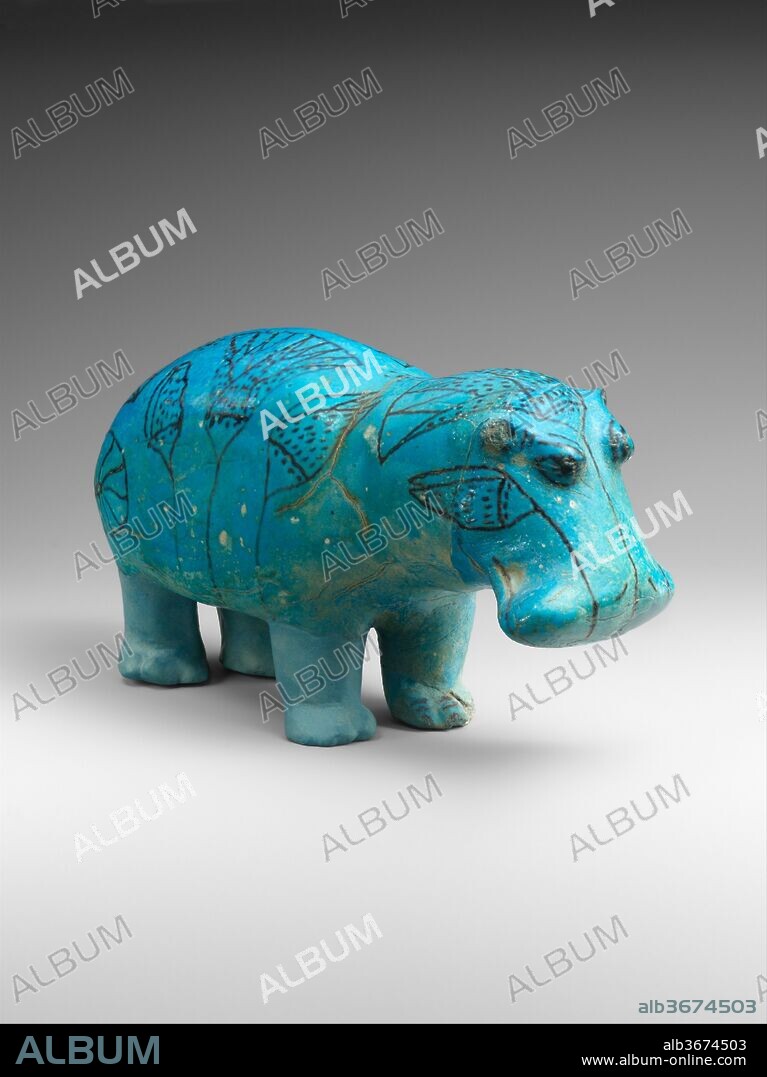alb3674503
Hippopotamus ("William")

|
Añadir a otro lightbox |
|
Añadir a otro lightbox |



¿Ya tienes cuenta? Iniciar sesión
¿No tienes cuenta? Regístrate
Compra esta imagen

Título:
Hippopotamus ("William")
Descripción:
Ver traducción automática
Hippopotamus ("William"). Dimensions: L. 20 cm (7 7/8 in.); W. 7.5 cm (2 15/16 in.); H. 11.2 cm (4 7/16 in.). Dynasty: Dynasty 12. Reign: Senwosret I to Senwosret II. Date: ca. 1961-1878 B.C..
This well-formed statuette of a hippopotamus (popularly called "William") demonstrates the Egyptian artist's appreciation for the natural world. It was molded in faience, a ceramic material made of ground quartz. Beneath the blue glaze, the body was painted with the outlines of river plants, symbolizing the marshes in which the animal lived.
The seemingly benign appearance that this figurine presents is deceptive. To the ancient Egyptians, the hippopotamus was one of the most dangerous animals in their world. The huge creatures were a hazard for small fishing boats and other rivercraft. The beast might also be encountered on the waterways in the journey to the afterlife. As such, the hippopotamus was a force of nature that needed to be propitiated and controlled, both in this life and the next. This example was one of a pair found in a shaft associated with the tomb chapel of the steward Senbi II at Meir, an Upper Egyptian site about thirty miles south of modern Asyut. Three of its legs have been restored because they were probably purposely broken to prevent the creature from harming the deceased. The hippo was part of Senbi's burial equipment, which included a canopic box (also in the Metropolitan Museum), a coffin, and numerous models of boats and food production.
The hippo's modern nickname first appeared in 1931 in a story that was published in the British humor magazine Punch. It reports about a family that consults a color print of the Met's hippo--which it calls "William"--as an oracle.
Técnica/material:
FAIENCE
Periodo:
MIDDLE KINGDOM
Museo:
Metropolitan Museum of Art, New York, USA
Crédito:
Album / Metropolitan Museum of Art, NY
Autorizaciones:
Modelo: No - Propiedad: No
¿Preguntas relacionadas con los derechos?
¿Preguntas relacionadas con los derechos?
Tamaño imagen:
3189 x 4257 px | 38.8 MB
Tamaño impresión:
27.0 x 36.0 cm | 10.6 x 14.2 in (300 dpi)
 Pinterest
Pinterest Twitter
Twitter Facebook
Facebook Copiar enlace
Copiar enlace Email
Email
